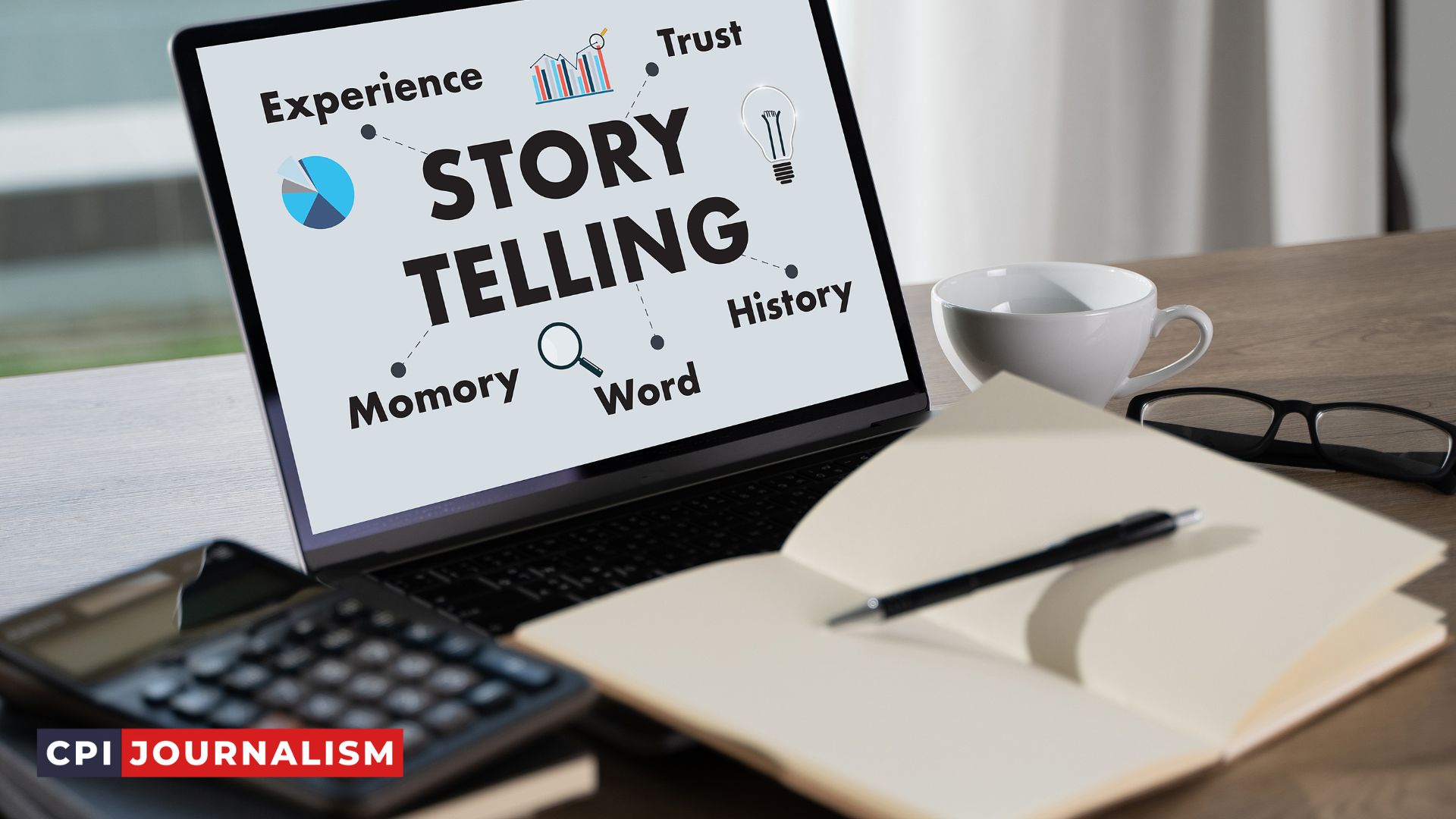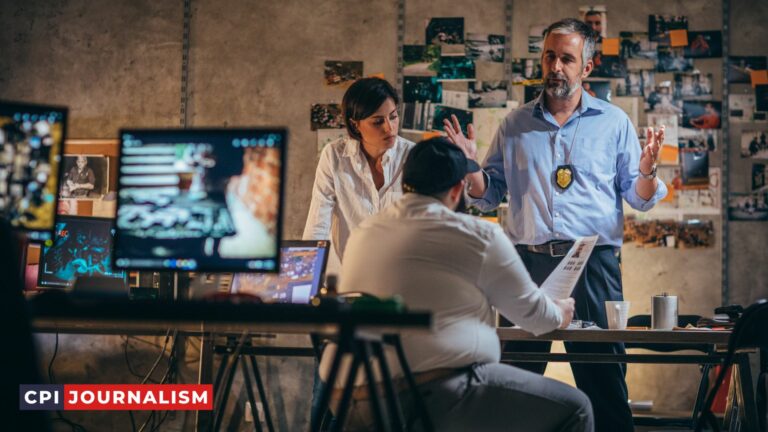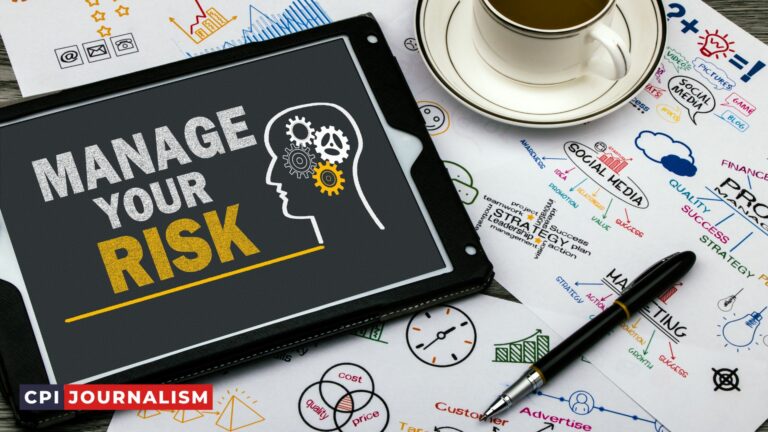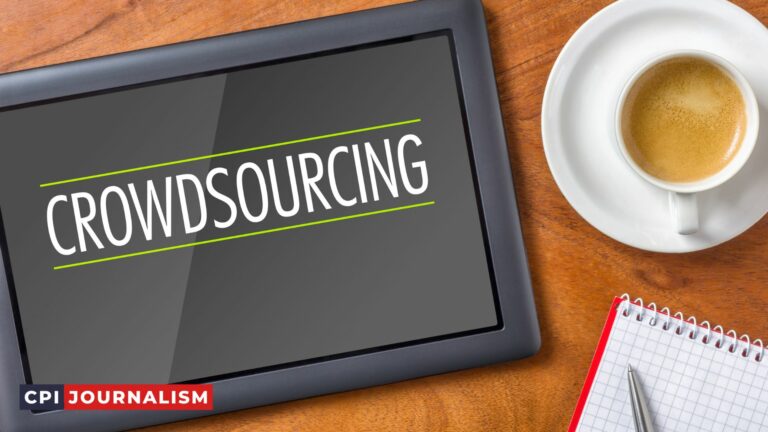How Can Journalists Use Visual Storytelling Techniques to Engage and Inform Audiences in Investigative Reporting?
As an experienced journalist, I have seen firsthand the power of visual storytelling techniques to engage and inform audiences in investigative reporting.
In this article, I will be sharing my knowledge and experience with upcoming journalists on how they can use these techniques to create more effective investigative stories.
Visual storytelling techniques can be used to bring investigative stories to life, helping to draw readers in, and providing a more compelling experience for them.
I will discuss the various techniques available and how they can be used to create stories that are both engaging and informative.
A. Overview of How Journalists Can Use Visual Storytelling Techniques to Engage and Inform Audiences in Investigative Reporting
As journalists, it is important to not just report the news, but also tell a compelling story in a way that engages and informs audiences.
Visual storytelling techniques can be a great way to do this. By utilizing these techniques, journalists can create an immersive experience that helps to drive home their message.
The primary goal of visual storytelling is to engage and inform audiences in a way that allows them to connect with the story.
This can be achieved through the use of engaging visuals, such as photos and videos, as well as through the use of captivating and impactful text.
When using visuals in investigative reporting, it is important to remember that the visuals should not be used to distract from the story.
Rather, the visuals should be used to enhance the story, giving readers a clear understanding of the facts and context.
It is also important to remember that visuals should be used to help explain the story, rather than to simply illustrate it.
For example, a journalist may use a diagram to explain a complex process or data set, or they may use an image to show the impact of an event.
Finally, journalists should always strive to use visuals that are relevant and up-to-date. By doing so, journalists can ensure that their visuals are engaging and informative, and that they are conveying the most accurate information to their readers.
In summary, visual storytelling techniques can be a powerful tool for journalists in investigative reporting.
By utilizing engaging visuals, impactful text, and relevant and up-to-date information, journalists can create an immersive experience that helps to drive home their message and engage and inform readers.
II. Benefits of Visual Storytelling in Investigative Reporting
Visual storytelling is an invaluable tool for investigative reporters. It provides an opportunity to engage and inform audiences in a way that words alone cannot.
Through the use of visuals, investigative reporters can captivate their audience and more effectively communicate their findings.
One of the key benefits of visual storytelling in investigative reporting is its ability to simplify complex topics.
Visuals can be used to help break down complex information and present it in a more digestible and easily understandable format.
This can help to ensure that audiences are not overwhelmed and can more easily comprehend the story that is being presented.
Visual storytelling in investigative reporting also has the potential to create a more engaging experience for viewers.
Through the use of visuals, reporters can help to make the story more compelling and drive home the impact of the findings.
This can help to ensure that the audience is more invested in the story and better able to understand the implications of the findings.
Finally, visual storytelling in investigative reporting can be used to create more powerful and persuasive arguments.
Visuals can be used to help support a reporter’s claims and provide evidence that further strengthens their argument. This can be particularly effective when it comes to making a case for a particular outcome or solution.
In summary, visual storytelling is an invaluable tool for investigative reporters. It provides an opportunity to engage and inform audiences in a way that words alone cannot.
Through the use of visuals, reporters can simplify complex topics, create a more engaging experience for viewers, and create more powerful and persuasive arguments.
A. Enhances Engagement
As an experienced journalist, I firmly believe that the use of visual storytelling techniques is an effective way to engage and inform audiences in investigative reporting.
Visual storytelling can help to capture the attention of audiences in a way that words alone cannot. By combining images, videos, and other multimedia elements with text, we can create a more compelling and engaging story.
For example, incorporating images of the locations and people involved in the story can help to bring the story to life, while videos can help to provide a deeper understanding of the issues at hand.
Additionally, interactive elements such as quizzes, polls, and simulations can help to keep audiences engaged and invite them to take an active role in the story.
These elements can be used to provide additional context and help to illustrate the complexities of the story more effectively.
In addition to enhancing engagement, using visual storytelling techniques can also help to simplify complex information and make it easier for audiences to understand.
By presenting information in a visually appealing way, we can break down complex topics into more easily digestible chunks. This can help to make the story more accessible to a wider range of audiences and ensure that the message is effectively communicated.
Finally, it is important to note that visual storytelling techniques can also be used to emphasize the importance of investigative reporting and help to bring attention to a story that may have otherwise been overlooked.
By leveraging the power of visuals, we can ensure that the story is seen and heard by the widest possible audience.
In summary, the use of visual storytelling techniques can be an effective way to engage and inform audiences in investigative reporting.
By incorporating images, videos, and interactive elements into the story, we can create a more compelling and engaging narrative that resonates with audiences and ensures that the message is effectively communicated.
B. Increases Understanding
Visual storytelling techniques can be incredibly effective in investigative reporting because they have the power to engage and inform audiences in ways that written words cannot.
Visuals can capture attention and draw readers in, allowing them to better understand complex stories and issues. They can also help to bring facts and figures to life and make them more accessible to readers.
For example, a journalist could use infographics to illustrate the results of a data-driven investigation, or use video to capture and explain the process of an investigation.
Using visual storytelling techniques also helps journalists to better explain the implications of an investigation. For example, an investigative report might uncover information that needs to be contextualized and understood in order to be appreciated.
In such a case, visuals can be used to create a narrative that makes the story more impactful. Visuals can also be used to provide additional evidence and to illustrate the consequences of an investigation, helping readers to better understand the significance of the findings.
Finally, visual storytelling techniques can be used to make an investigative report more engaging and accessible. By using visuals, journalists can add visual interest to the story and make it easier for readers to follow along.
Visuals can also be used to break up large amounts of text, making the story easier to read and digest. In addition, visuals can be used to add depth and complexity to a story, helping readers to engage more deeply with the material.
C. Enhances Impact
When it comes to engaging and informing audiences in investigative reporting, visuals can play an integral role in amplifying the impact of the story.
Visuals can help convey complex ideas and stories in an easily accessible way, allowing for a greater understanding of the material. Furthermore, visuals can also help to humanize the story, creating a deeper connection between the audience and the content.
Visual storytelling techniques can help journalists to effectively communicate their message to their audience. By utilizing visuals such as photographs, illustrations, infographics, and videos,
reporters can bring the story to life and make it more engaging. Additionally, visuals can be used to provide context, add perspective, and emphasize the most important points.
Visual storytelling techniques can also be used to create a greater emotional impact on the audience. Images, videos, and graphics can be used to evoke emotion, connecting the audience to the story in a deeper way.
Visuals can also be used to draw the audience in, allowing them to better understand the significance of the story.
In conclusion, visual storytelling techniques can be a powerful tool for journalists in their investigative reporting.
Not only do visuals help to engage and inform audiences, but they also help to increase the impact of the story in a meaningful way.
By leveraging visuals, reporters can create a powerful and lasting impression on their audience.
D. Enhances Reach
One of the major benefits of using visual storytelling techniques in investigative reporting is its ability to enhance the reach of the story.
Visual storytelling offers a unique opportunity to engage and inform a broader audience, particularly those who may not be interested in traditional investigative reporting.
By utilizing powerful visuals such as photos, videos, and infographics, journalists can effectively reach a wider audience, increasing the impact of their stories.
For instance, a compelling photo or video clip may draw in viewers who may not have otherwise paid attention to the story. Similarly, an infographic can help to explain complex data or concepts in an easy-to-understand visual format.
By using visuals to engage viewers, journalists can ensure that their investigative stories are seen and heard by a larger segment of the population.
In addition, visuals can also help journalists to reach new audiences by engaging them on social media. By posting engaging visuals on social media, journalists can gain more traction and reach more people than they would have with just text alone.
This can be particularly effective for investigative journalists who are trying to reach a younger audience, as visuals are often more effective at engaging younger viewers.
In conclusion, visual storytelling techniques can be a powerful tool for investigative journalists to engage and inform audiences. By leveraging visuals, journalists can reach a wider audience, increase the impact of their stories, and engage younger viewers on social media.
III. Types of Visual Storytelling Techniques
Visual storytelling is a powerful tool for investigative journalism, as it allows journalists to provide a comprehensive analysis of complex topics and engage audiences in a visually stimulating way.
There are several types of visual storytelling techniques that journalists can use to engage and inform audiences in investigative reporting.
One type of visual storytelling technique is the use of illustrations and infographics. Illustrations and infographics provide a visual representation of information and can be used to illustrate complex topics or concepts in an understandable and engaging manner.
Infographics are particularly useful for investigative reporting, as they can be used to present data in a visually appealing and easily digestible way.
Another type of visual storytelling technique is the use of photographs and videos. Photographs and videos bring a story to life and can be used to capture a moment, convey emotion, and provide context for a story.

Photographs and videos can also help journalists to illustrate a point or provide evidence for their reporting.
Finally, journalists can also use interactive visual elements to engage audiences in their investigative reporting. Interactive elements such as maps, timelines, and diagrams can help audiences to understand a story more clearly, and provide a more immersive experience.
By utilizing various visual storytelling techniques, journalists can engage and inform audiences in their investigative reporting in a powerful, visually stimulating way.
A. Infographics
Infographics are a powerful visual storytelling tool that can help journalists engage and inform audiences in investigative reporting. Infographics provide a visual representation of data and information, making it easier for viewers to understand complex ideas and stories.
By using engaging visuals, infographics break down large amounts of data into digestible chunks and provide a more accessible way to explore complex topics.
Infographics can be used to explain complex stories or topics in a way that is easier to understand. They can also be used to highlight patterns or trends in data.
For investigative journalists, infographics can be a useful tool to bring attention to important findings and support investigative stories. Additionally, infographics can help make stories more visually appealing and engaging for viewers.
When creating infographics, journalists should focus on simplicity. Complex infographics can be overwhelming for viewers and divert attention away from the message.
Instead, infographics should be concise and to the point, using visuals to communicate the main message. Additionally, journalists should ensure that the information provided is accurate and reliable.
Overall, infographics can be a valuable tool for investigative journalists to engage and inform audiences. By breaking down data into accessible visuals and providing viewers with an engaging way to explore stories, infographics can help journalists effectively tell their stories.
B. Data Visualization
Data visualization is an effective way to engage and inform audiences in investigative reporting. It is a powerful tool that helps to bring data to life and provide audiences with a better understanding of the story.
By presenting data in an engaging and visually appealing way, journalists can tell complex stories in a way that is more accessible to viewers.
Data visualization tools can be used to create charts, graphs, maps, and other visual displays of data. This can be used to illustrate trends, correlations, and patterns that might not be as easily seen in raw data.
By using data visualization, journalists can demonstrate the key points of their story in a more comprehensive way.
Data visualization can also be used to make complicated topics easier to understand. By providing visuals, viewers can quickly understand the main points of the story and better grasp the reporting.
Additionally, data visualization can be used to provide context to a story, providing more insight into the data and the story.
Data visualization can also be used to highlight key findings or to draw attention to the most important parts of the story. By placing the data in a visually appealing way, journalists can draw the viewers’ attention to the key points of the story.
Overall, data visualization is a powerful tool for engaging and informing audiences in investigative reporting. By using data visualization tools, journalists can tell complex stories in a more accessible and engaging way.
Additionally, data visualization can be used to make complicated topics easier to understand and to highlight key findings or draw attention to the most important parts of the story.
C. Video
Video has become an increasingly popular medium for journalists to use in investigative reporting. Video can be used to not only engage audiences, but to also provide a more in-depth look into the story.
By incorporating visual elements such as interviews, b-roll footage, and creative graphics, journalists can effectively communicate the story in a compelling and informative way.
When using video for investigative reporting, it is important to keep the focus on the story. Journalists should avoid adding too many bells and whistles such as unnecessary graphics or sound effects. The goal is to provide a clear and concise account of the story, not to distract from it.
Journalists should also be mindful of the format of their video. Short, snappy videos are often more effective than lengthy ones. If a longer video is required, it should be broken up into smaller segments that can be shared separately.
Additionally, if the video is used to supplement an article, the video should be able to stand alone without the need for additional context.
Finally, it is critical to maintain a high production value for the video. Although it is not necessary to have Hollywood-level production, it is important to ensure that the video is well-lit, clear, and free from background noise.
Poorly produced videos can be a distraction from the story and can lead audiences to become disengaged.
By taking the time to ensure that their video is both informative and engaging, journalists can effectively use visual storytelling techniques to communicate their investigative reporting.
D. Photography
As an experienced journalist, I strongly believe that photography is an incredibly powerful visual storytelling tool when it comes to investigative reporting.
By capturing images in a compelling and engaging way, journalists can easily draw in their audience, helping to keep them engaged and informed.
One approach to photography in investigative reporting is to focus on the people involved in the story. Capturing the emotion of a person – whether they are a victim of a crime, a whistleblower, or a person affected by a policy – can be incredibly powerful in conveying the story.
This can help to evoke empathy in the audience and can provide a human element to the story.
It is also important to consider the context in which photos are taken. For example, when covering a story about a crime, it can be powerful to take photos of a crime scene, as this can help to convey the severity of the incident. Similarly,
if a story is about a policy that affects people’s lives, photographing the people that it affects can be an effective way to convey the story.
Finally, when selecting photos for a story, it is important to consider the composition of the photo. Photos that are well composed can help to draw the audience in, and can make the story more visually engaging.
Ultimately, photography can be an incredibly powerful visual storytelling tool for investigative reporting. By capturing images in a compelling and engaging way, journalists can help to convey the story in a way that will keep their audience engaged and informed.
E. Interactive Visualizations
Interactive visualizations are one of the most powerful visual storytelling techniques used in investigative journalism.
They allow readers to interact with and explore the data underlying the story, helping them to understand the complexities of the issue and its implications.
Interactive visualizations often take the form of maps, timelines, and interactive charts and graphs. They can be used to illustrate trends, correlations, and causality, as well as to make comparisons and highlight outliers in the data.
They can also be used to provide context, such as linking events in a timeline to events in the past or present.
Interactive visualizations should be designed with the reader in mind. The visualizations should be designed to be intuitive and easy to understand at a glance, with clear labels and navigation. Additionally, they should be designed to be responsive and scalable to different devices and screen sizes.
Interactive visualizations can be used to create compelling visual stories that engage and inform audiences in investigative journalism. They can help to make complex data sets more accessible and understandable, and can be used to illustrate key facts, correlations, and trends.
By leveraging interactive visualizations, journalists can create meaningful visual stories that engage and inform readers.
IV. How to Use Visual Storytelling Techniques in Investigative Reporting
Visual storytelling techniques can be an extremely powerful tool for investigative reporting. By incorporating visuals into investigative pieces, journalists can engage and inform their audiences more effectively than through written pieces alone.
Here are some tips for using visual storytelling techniques in investigative reporting:
1. Start with an Eye-Catching Image: When crafting a visual story, it is important to begin with an eye-catching image that captures the attention of your audience and sets the tone for the story. This could be a striking photograph, a graph, or even a video.
2. Use Visuals to Showcase Data: Visuals can be used to effectively showcase data and make it easier for audiences to digest. This could be done through charts, graphs, infographics, and more.
3. Create a Narrative Flow: When utilizing visuals to tell a story, it is important to create a narrative flow that guides the audience through the story. This could be done through the use of introductory shots, establishing shots, close-ups, cutaways, and more.
4. Tell the Story Through Multiple Platforms: Utilizing visuals to tell a story doesn’t have to be limited to one platform. Journalists can use a variety of platforms to tell their story, such as television, radio, print, and online.
5. Incorporate Context and Perspective: Visuals can be a great way to provide context and perspective to a story. Through photographs and videos, audiences can get a better understanding of the story and the people involved.
By incorporating visual storytelling techniques into investigative reporting, journalists can engage and inform their audiences more effectively. By utilizing the tips outlined above, journalists can create compelling visuals that will help make their stories stand out.
A. Identify the Story
As an experienced journalist, I know that the first step in any successful investigative reporting is to identify the story. This involves understanding the purpose of the story, the sources of information, and the facts and angles of the story.
It also involves developing an understanding of the audience and how best to engage them with the story.
To do this, it is important to ask questions, conduct research, and listen to the people who are affected by the story. Talk to people who have experienced the event or have knowledge that can shed light on the story. This will help you to develop a better understanding of the story and its implications.
It is also important to analyze the information that you have gathered. Look for patterns or similarities between sources or facts. This will help you to identify the key elements of the story and what facts need to be highlighted to engage the audience.
Once the story has been identified, it is important to create a visual narrative for the story. This can be done by creating visuals and graphics that will help to illustrate the story and help the audience to engage with the story.
Visual story-telling techniques can also be used to bring the story to life and help the audience to understand the story in a more meaningful way.
B. Gather The Data
As an investigative journalist, it is essential to go beyond the surface level of a story and delve deep into the facts and evidence. To do this, you must first gather the necessary data and information to support your story.
The process of gathering this data can be a daunting task, but with the right resources and research techniques, you can efficiently and effectively uncover the facts and evidence you need to support your story.
The first step is to establish reliable sources that you can trust. These sources can include interviews, public records, documents, databases, and more. It is also important to be aware of any potential biases or conflicts of interest that might exist.
Once you have identified and established your data sources, you can begin to analyze the data and facts. This includes reading and understanding the data, as well as cross-referencing to identify inconsistencies or patterns.
You should also be sure to check for any discrepancies or inaccuracies that could affect the accuracy of your story.
Finally, it is important to synthesize the data and evidence into a cohesive narrative. This requires you to be able to recognize and identify the key players and events, as well as the various elements that contribute to the story.
By following these steps, you can ensure that you have the necessary data and evidence to support your investigative story.
With these resources, you can move forward with confidence knowing that you have the facts to back up your claims and inform your readers.
C. Choose the Right Visualization
As an experienced journalist, I understand the importance of choosing the right visualization when it comes to investigative reporting. Visualizations can help bring stories to life, making them more engaging and informative for audiences.
In order to ensure that the visual story you’re telling is as effective as possible, you need to select the right visualization for the story. Here are a few tips for choosing the best visualization for your story:
1. Consider the Data: Before selecting a visualization, consider the data you’re working with. What type of data is it? Is it numerical, categorical, or a combination of both? Depending on the data, certain visualizations may be better suited than others.
2. Simplicity: Choose a visualization that is simple and easy to understand. Don’t choose something that is overly complicated, as this can make it harder for viewers to understand.
3. Clarity: Clarity is key when selecting a visualization. Make sure that the visualization is clear and easy to interpret.
4. Accessibility: When selecting a visualization, consider the accessibility of the visualization. Is it accessible to viewers with disabilities or those who have difficulty understanding visualizations?
By following these tips, you can ensure that you’re selecting the right visualizations for your investigative reporting, helping to engage and inform audiences.
D. Create The Visualization
Creating a compelling visual story is essential for engaging and informing audiences in investigative reporting.

As a journalist, it is important to think about the best way to communicate the story through visuals and what type of data or images to use. Here are some tips to help you create an effective visual story.
1. Choose the Right Visual Format: Select the best visual format that will help you communicate the story in an effective and meaningful way.
Consider the information you want to present and the audience you are targeting. For example, if you are presenting a complex financial analysis, an infographic may be the best choice. On the other hand, if you are presenting a narrative story, a video or animation could be the best option.
2. Collect and Organize Data: Once you have chosen the visual format, start collecting data and organizing it. Consider the type of data you will need and how it should be organized.
For example, if you are creating an infographic, you will need to gather data points and organize them into categories.
3. Incorporate Visual Elements: Incorporating visual elements such as images, diagrams, and charts can help make your story more engaging and informative.
Consider adding photographs, illustrations, and other visuals to bring your story to life.
4. Test Your Visualization: Once you have created the visualization, test it to make sure it communicates the story effectively. Ask friends or colleagues to review it and provide feedback.
By following these tips, journalists can create compelling visual stories that engage and inform audiences in investigative reporting.
E. Publish the Visualization
Once the visual story has been created, it is time to publish it to the world. In order to maximize the reach and impact of the visual story, it is important to consider the channels through which to publish it.
Different channels will have different advantages and limitations when it comes to disseminating the visual story.
The most important thing to consider is the target audience. Different channels will be more suitable for different types of audiences.
For example, if the audience is primarily made up of younger people, social media platforms such as Instagram and Twitter may be the best option. For a more professional audience, a website or blog may be better.
In addition to considering the audience, it is important to consider the visual story format. Some platforms may not be suitable for certain formats, such as interactive or animated visual stories.
It is important to understand the limitations of each platform and choose one that is best suited for the format.
Finally, it is important to ensure that the visual story is easily shareable. If the story is not easy to share, it will be difficult to reach a wide audience.
Social media platforms such as Twitter and Facebook make it easy to share content, which can help increase the reach of the story.
By considering all of these factors, journalists can ensure that their visual stories reach the widest possible audience and make the most impact.
F. Promote The Visualization
As a journalist, it is essential to ensure your audience understands and engages with your investigative reporting. One way to do this is to promote the visualizations you create in your stories.
Visualizations can help simplify complex data and make it easier for readers to grasp the message of your story.
When promoting your visualizations, it is important to ensure they are clear and visually appealing. This means using colors and imagery that are not too overwhelming and that are easy to understand.
Additionally, ensure your visualizations are understandable without additional explanation. If needed, include a caption or explanation to further explain the data presented in the visual.
It is also important to consider the platform your visuals will be viewed on. For example, if you are sharing your story on social media, visuals should be sized appropriately for the platform.
Additionally, if you are creating videos, consider subtitles to ensure everyone can access and understand the visualizations.
Finally, promote your visualizations before, during, and after the publication of your story. This will help ensure the visuals are seen and understood by your audience.
Additionally, it will help increase the reach of your story, as visuals are often more shareable than plain text.
V. Conclusion
It is essential for journalists to use visual storytelling techniques to engage and inform audiences in investigative reporting.
Visual storytelling is a powerful tool for providing audiences with information about a particular story, and it can help to make the story more compelling and memorable.
Journalists have the opportunity to use a variety of visual elements, from photos and videos to infographics and 3D animations, to convey their stories more effectively.
By incorporating these elements into their reporting, journalists can create an engaging and immersive experience for their audiences, allowing them to better understand and appreciate the story.
As a journalist, it is important to remember that visual storytelling is not only about the visuals themselves. It is also about the story and how you tell it.
It is important to consider the context and narrative of your story, as well as the audience and the message that you want to convey. By combining the power of visuals and storytelling, journalists can create compelling and informative investigative reporting that will engage and inform their audiences.
A. Summary Of How Journalists Can Use Visual Storytelling Techniques To Engage And Inform Audiences In Investigative Reporting
Visual storytelling techniques can be used by journalists to successfully engage and inform audiences in investigative reporting. By utilizing these techniques, journalists can create compelling stories that will draw readers in and keep their attention.
The most effective visual storytelling techniques for investigative reporting include using digital media such as videos, photos, and graphics, as well as creating interactive multimedia stories. These techniques can be used to provide context, illustrate key points, and set the narrative.
Videos and photos can be used to capture a subject in motion, making it more engaging for audiences. Additionally, they can be used to create compelling stories that can help to illustrate key points, such as in a complex investigation.
Graphics can be used to provide an overview of a larger story or to present an issue in a concise and visually appealing way.
Interactive multimedia stories can be an effective way to engage readers and to help them to understand the complexities of a story. Interactive stories can be used to provide readers with a deeper understanding of the story and to help them explore the different aspects of a story.
By utilizing these visual storytelling techniques, journalists can effectively engage and inform audiences in investigative reporting. By creating compelling stories, journalists can draw readers in and keep their attention while providing them with a deeper understanding of the story.
B. Benefits Of Visual Storytelling In Investigative Reporting
Visual storytelling is an invaluable tool for investigative reporting, as it helps journalists to communicate their stories to a wider audience.
Through the use of visuals, journalists can tell complex stories in a more engaging and informative way, highlighting the most important facts and details.
Using visuals to tell investigative stories has a range of benefits, including:
1. Increased Engagement: Visuals can make stories much more engaging for the audience, as they can better understand and appreciate the story being told.
They can also help to draw the reader in and keep them interested, as visuals help to break up the text and keep the information more concise and digestible.
2. Clarity: Visuals can help to provide clarity to a story, making it easier for the audience to understand the key facts and details.
This is especially important in investigative stories, which can often be complex and difficult to follow.
3. Impact: Visuals can also be used to create a greater impact, as they can often convey emotions and moods more effectively than words.
This can be particularly useful in investigative stories, as it helps to bring the story to life and to create a stronger emotional response from the audience.
4. Reach: Finally, visuals can also help to extend the reach of a story, as they can be shared more widely and easily on social media.
This can be particularly useful for investigative stories, as it helps to ensure that more people are aware of the story and can take action if necessary.
Overall, visuals can be a powerful tool for investigative reporting, as they can help to make stories more engaging, provide clarity, create a greater impact, and extend the reach of stories.
As such, journalists should strive to use visuals wherever possible in order to ensure that their stories are as effective as possible.
C. Tips for Creating Effective Visualizations
As an experienced journalist, I know that visual storytelling techniques can be incredibly powerful tools to engage and inform audiences in investigative reporting.
To make sure your visualizations are effective, here are some tips:
1. Choose the right data visualization tool for your project. Depending on the type of data you’re working with and the nature of your project, you’ll want to select the most appropriate data visualization tool. Popular tools include charts, maps, diagrams, and infographics.
2. Keep it simple. Don’t overload your visualization with too much data or too many elements. A simple, well-crafted visualization is more likely to be effective.
3. Use visual elements to highlight key data points. Visual elements such as colors, shapes, and sizes can be used to draw attention to important data points or relationships.
4. Use appropriate labeling. Make sure to label all elements of your visualization clearly and accurately.
5. Test your visualization. Show your visualization to other people and get feedback. This will help you identify any possible problems before you publish it.
By following these tips, you can ensure that your visualizations are effective and engaging. Good luck!







